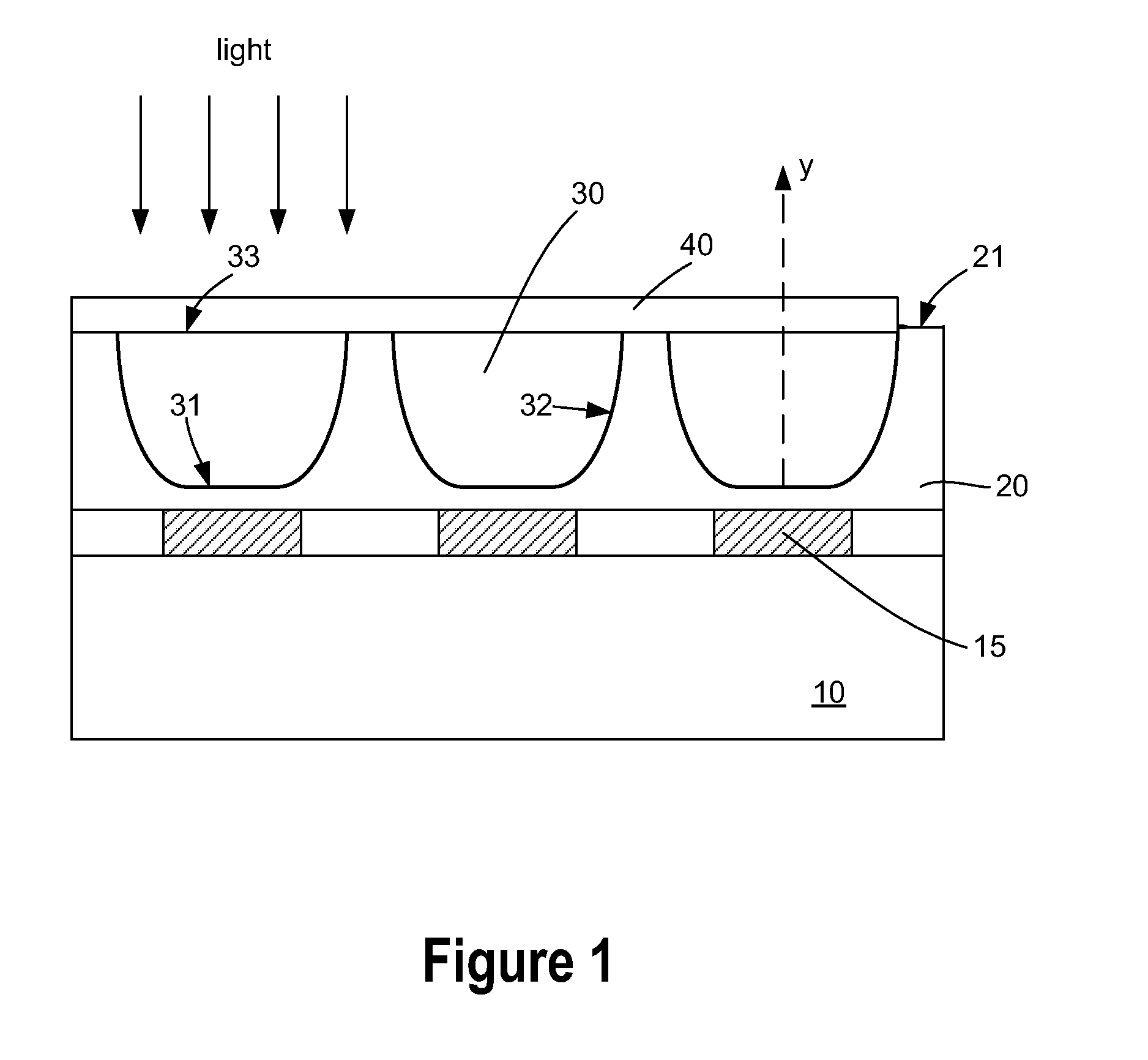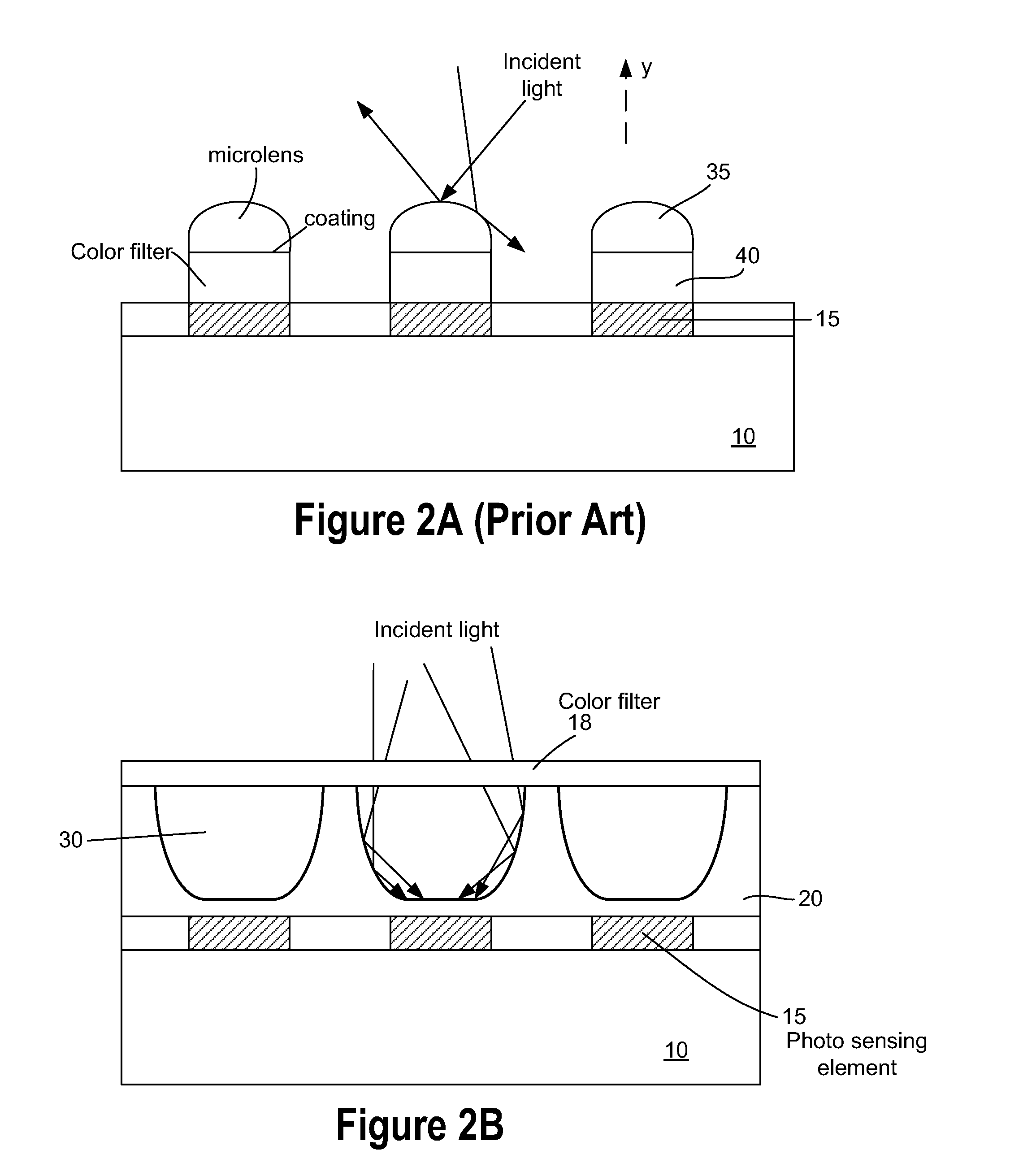Method and system of embedded microlens
a technology of embedded microlens and microlens, which is applied in the direction of radio frequency controlled devices, semiconductor devices, electrical apparatus, etc., can solve the problems of non-standard packaging methods, difficult to reduce the size of devices, and the cost of ic fabrication facilities can be hundreds of millions or even billions of dollars, so as to reduce the processing steps of photolithography, reduce the processing cost, and facilitate the use
- Summary
- Abstract
- Description
- Claims
- Application Information
AI Technical Summary
Benefits of technology
Problems solved by technology
Method used
Image
Examples
Embodiment Construction
[0018]Embodiments of the present invention relate to integrated circuits and the processing for the manufacture of semiconductor devices. More particularly, embodiments of the present invention provide methods and structures for making an embedded microlens for integrated photo-electronic devices. But it would be recognized that the invention has a much broader range of applicability. For example, embodiments of the present invention can be applied to a variety of charge-coupled devices and CMOS image sensors containing microlens and contact image sensor (CIS) applications.
[0019]A conventional microlens fabrication process is often performed after the silicon processing or on a finished silicon wafer. Typically, microlenses are formed after the formation of color filters. The conventional process requires that a coating material be applied on the color filter layer and that the coating material be planarized prior to the deposition of the lens material. Multiple separate photolithog...
PUM
 Login to View More
Login to View More Abstract
Description
Claims
Application Information
 Login to View More
Login to View More - R&D
- Intellectual Property
- Life Sciences
- Materials
- Tech Scout
- Unparalleled Data Quality
- Higher Quality Content
- 60% Fewer Hallucinations
Browse by: Latest US Patents, China's latest patents, Technical Efficacy Thesaurus, Application Domain, Technology Topic, Popular Technical Reports.
© 2025 PatSnap. All rights reserved.Legal|Privacy policy|Modern Slavery Act Transparency Statement|Sitemap|About US| Contact US: help@patsnap.com



